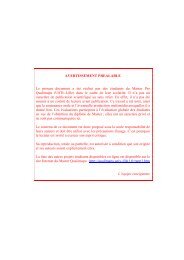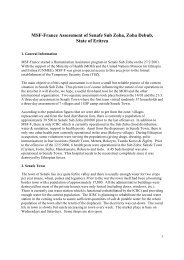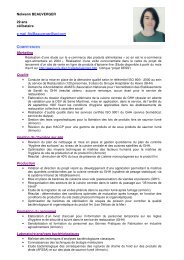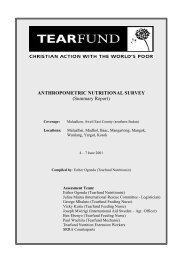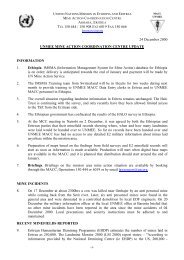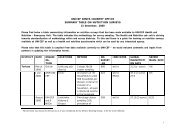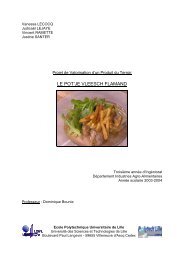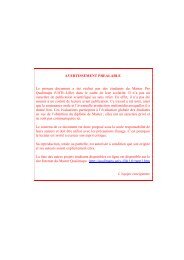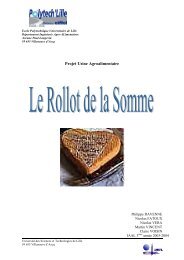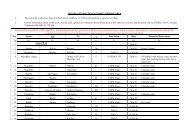IDPs (ACF) - PFEDA / Page d'accueil PFEDA
IDPs (ACF) - PFEDA / Page d'accueil PFEDA
IDPs (ACF) - PFEDA / Page d'accueil PFEDA
Create successful ePaper yourself
Turn your PDF publications into a flip-book with our unique Google optimized e-Paper software.
vulnerable to malnutrition. It would be interesting to pursue this theory further in the<br />
future by performing a further Nutritional Survey on the town population of Mogadishu.<br />
The last major Nutritional Survey to cover the <strong>IDPs</strong> (see Annex 10) was completed<br />
almost exactly 5 years ago between the 7 th and 20 th June 1995 (performed by <strong>ACF</strong>). The<br />
Global Acute Malnutrition rate (in Z scores) was 26.3% (CI: 22.3% - 30.8%). The Severe<br />
Acute Malnutrition rate (in Z scores) was 5.4% (CI: 3.5% - 8.1%). Although there has<br />
been a significant drop since this time (13.4% drop in Global Acute Malnutrition and<br />
3.4% in Severe Acute Malnutrition), there still remains a considerable problem.<br />
There is agreement between different agencies working in Somalia (Nutrition Working<br />
Group, 1999, ‘Nutrition Survey – Recommendations for Somalia’, Nairobi) that a MUAC<br />
of less than 125mm is equivalent to Global Acute Malnutrition. In this Nutrition Survey<br />
145 children (16.1%) were found with a MUAC of less than 125mm. Only 62 (42%) of<br />
these 145 children had in addition a corresponding weight for height score of less than 2<br />
Z scores. It would appear that using the MUAC of less than 125mm as a criterion of<br />
Global Acute Malnutrition is:<br />
- In this sample raising the overall Global Acute Malnutrition Rate by 24.8%<br />
- Corresponds on an individual basis with the Statistically correct Z scores only<br />
42% of the time.<br />
Vaccination Coverage<br />
The correct vaccination coverage for measles is low. This is the normal situation at the<br />
moment in Somalia. Yet at the same time, the coverage appears to be particularly when<br />
account is take of the fact that <strong>ACF</strong> have been conducting an ongoing measles<br />
vaccination campaign (see Annex 2) which would indicate a far greater % of the<br />
population has been properly vaccinated than the survey indicates. It is interesting that a<br />
larger number of people said that there child had been vaccinated but were unable to<br />
produce the vaccination card. No firm explanation can be offered for this difference.<br />
5 years ago, in June 1995, the confirmed vaccination coverage for measles was 39.8%. It<br />
now stands at 10%. This is a massive reduction in confirmed coverage, and highlights the<br />
difficulties in undertaking vaccination activities in the context of Mogadishu. At the same<br />
time it has to be considered a weakness of the <strong>ACF</strong> vaccination team.<br />
Length of time displaced<br />
97.1% of the <strong>IDPs</strong> have now spent at least one year in Mogadishu. This does not<br />
correspond at all with the figures for the population influxes that <strong>ACF</strong> Health Education<br />
team collects each month (see Annex 2), which would indicate a much higher influx of<br />
new <strong>IDPs</strong> into the city over the last 12 months (around 10% of the population). The<br />
conflicting nature of these results would suggest that there is a need to review how this<br />
information is being collected on the ground.<br />
26



